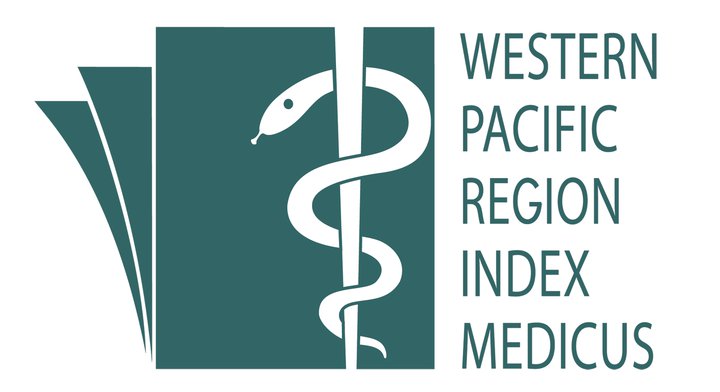The COMBI Approach in Managing Dengue Cases in an Urban Residential Area, Nilai, Malaysia
Keywords:
Dengue - Survey - Aedes spp. - COMBI approach.Abstract
Introduction
Dengue is a disease propagated by vectors namely Aedes spp. mosquitoes. One of the effective approaches to control dengue is through integrated vector management and intervention programs. COMBI or Communication for Behavioral Impact is a strategic approach to control the Aedes population as well as dengue cases.
Methods
This study was conducted at Taman Desa Kolej, Nilai, Negeri Sembilan, an suburban residential area to determine the effectiveness of COMBI, by using questionnaire and entomological survey as well as implementation of an intervention program. We carried out activities such as the establishment of COMBI promoter team, clean up events, talk shows with the residential community and distributed pamphlets containing information about dengue.
Results
Results indicated significant difference (p<0.05) on the knowledge, opinion and practices about dengue among the residents, for the pre and post intervention program. The entomological survey showed that, the primary mosquito species in this area was Aedes albopictus which comprised of 78 (31%) of the total mosquitoes examined, followed by Culex gelidus of 58 (23%), Culex quinquefasciatus of 37 (14.7%) and Aedes aegypti of 21 (8.3%). The density of Aedes population did not show any significant difference.
Conclusions
In conclusion, COMBI intervention was effective in controlling dengue cases in Taman Desa Kolej.
Â
References
Communication for behavioural impact (COMBI): A toolkit for behavioural and social communication in outbreak response. Geneva: World Health Organization (WHO); 2012.
WJ Parks, LS Lloyd, MB Nathan, E Hosein, A Odugleh, GG Clark, DJ Gubler, C Prasittisuk, K Palmer, JL San MartÃn, SR Siversen, Z Dawkins & E Renganathan. International Experiences in Social Mobilization and Communication for Dengue Prevention and Control. Dengue Bulletin. 2004; (28).
Kuala Lumpur. Kementerian Kesihatan Malaysia. Laporan Tahunan: 2008.
Benjamin KW Koh, Lee Ching Ng, Yuske Kita, Choon Siang Tang, Li Wei Ang, Kit Yin Wong, Lyn James, Kee Tai Goh. The 2005 Dengue Epidemic in Singapore: Epidemiology, Prevention and Control. Annals Academy Medicine Singapore. 2008; (37):538-45.
Gubler, DJ & Clark, GG. Community Involvement in the Control of Aedes aegypti. Journal Epidemiol Community Health. 1996; (56): 148-152.
Mohd. Raili Suhaili, Everold Hosein, Zuraidah Mokhtar, Nyamah Ali, Kevin Palmer and Marzukhi Md. Isa. Applying Communication for Behavioural Impact (COMBI) in the Prevention and Control of Dengue in Johor Bahru, Johore, Malaysia. Dengue Bulletin. 2004; (28).
Rozhan S, Jamsiah M, Rahimah A, & Ang KT. The COMBI program in the prevention and control of dengue-the Hulu Langat experience. 2005. Available from: www.communityhealthjournal.org/pdf/vol12(1).
Gratz NG. Critical review of the vector status of Aedes albopictus. Medical and Veterinary Entomology. 2004; (18): 215–227.
Monath TP. Dengue: The Risk to Developed and Developing Countries. Proceeding National Academy Science. 1994; (91): 2395-2400.
Jones CM, Machin C, Mohammed K, Majambere S, Abdullah SA, Bakari OK, Juma M, Hilary R, & Louise AKH. Insecticide resistance in Culex quinquefasciatus from Zanzibar: implications for vector control programmes. Parasites and vectors. 2012; (5): 78.
Hidayati H, Mohd Sofian A, Nazni Wasi A & Lim LH. Insecticide resistance development in Culex quinquefasciatus (Say), Aedes aegypti (L.) and Aedes albopictus (Skuse) larvae against malathion, permethrin and temephos. Tropical Biomedicine. 2005;22 (1): 45–52.
Kyu HH, Thu M & der Putten MV. Myanmar migrant woman caretakers on prevention of Dengue fever: A study on Knowledge, Attitude and Practices in Tak Province, Thailand. AU Journal of Technology. 2005; 9 (2): 99-105.
Nahla Khamis Ragab Ibrahim, Adnan Al-Bar, Mohamed Kordey, Ali Al-Fakeeh. Knowledge, attitudes, and practices relating to Dengue fever among females in Jeddah high schools. Journal of Infection and Public Health. 2009; (2): 30-40.
Koenraadt CJM, Tuiten W, Sithiprasasna R, Kijchalao U, Jones JW & Scott TW. Dengue knowledge and practices and their impact on Aedes aegypti populations in Kamphaeng Phet, Thailand. American Society of Tropical Medicine and Hygiene. 2006; 74(4): 692–700.
Katyal R, Kumar K, Gill KS & Sharma RS. Impact of intervention measures on DF/DHF cases and Aedes aegypti indices in Delhi, India. Dengue Bulletin 2003; (27).
Downloads
Additional Files
Published
How to Cite
Issue
Section
License
IJPHR applies the Creative Commons Attribution (CC BY) license to articles and other works we publish. If you submit your paper for publication by IJPHR, you agree to have the CC BY license applied to your work. Under this Open Access license, you as the author agree that anyone can reuse your article in whole or part for any purpose, for free, even for commercial purposes. Anyone may copy, distribute, or reuse the content as long as the author and original source are properly cited. This facilitates freedom in re-use and also ensures that IJPHR content can be mined without barriers for the needs of research.





